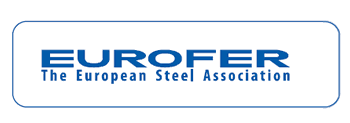Brussels, 6 October 2017 – The Definitive Regulation for anti-dumping case AD635 on Hot Rolled Flat (HRF) steel from five countries[i][i] was published today in the EU’s official journal. The case has proven highly irregular as it establishes ‘fixed’ duties on dumped imports from four of the five countries investigated – but it also leaves the door open for the use of Minimum Import Prices (MIP).

“The European Commission’s handling of this case has been highly unusual. The evidence submitted provided incontrovertible proof that dumping was occurring, that this was causing injury to Union industry, and that there was a causal link. The imposition of ad valorem duties –a percentage on the import price – would have been the logical measure based on EU anti-dumping law”, said Axel Eggert, Director General of the European Steel Association (EUROFER). “What we have now is a significantly reduced level of protection from dumping”.
“The Commission declined to impose provisional measures in April this year – contrary to normal practice – and initially proposed a uniform MIP set well below current market rates as the final measures”, stated Mr Eggert.
In September, member states massively rejected the ‘MIP’ plan, the first time the Commission has ever had a proposed anti-dumping measure turned down so decisively. Only after member states flatly rejected the MIP proposal were definitive fixed duties proposed. The fixed duties imposed range from between €17.6 and €96.5 per tonne.
“These fixed amounts are well below what the normal and more effective ad valorem formula would deliver”, added Mr Eggert. “Inexplicably, Serbia remains excluded from any measures, despite being home to a large, state-owned, state-run Chinese steel producer.”
“Fixed duties are better than the absurdity of having a single MIP for a product that comes in thousands of different grades. This whole episode weakens the anti-dumping procedure even as the EU seeks to successfully modernise its Trade Defence Instruments and make measures more, instead of less, effective”, concluded Mr Eggert.
[i][i] Brazil, Iran, Russia, Serbia and Ukraine.
About the European Steel Association (EUROFER)
EUROFER is located in Brussels and was founded in 1976. It represents the entirety of steel production in the European Union. EUROFER members are steel companies and national steel federations throughout the EU. The major steel companies and national steel federations in Switzerland and Turkey are associate members.
About the European steel industry
The European steel industry is a world leader in innovation and environmental sustainability. It has a turnover of around €170 billion and directly employs 320,000 highly-skilled people, producing on average 170 million tonnes of steel per year. More than 500 steel production sites across 22 EU Member States provide direct and indirect employment to millions more European citizens. Closely integrated with Europe’s manufacturing and construction industries, steel is the backbone for development, growth and employment in Europe.
Steel is the most versatile industrial material in the world. The thousands of different grades and types of steel developed by the industry make the modern world possible. Steel is 100% recyclable and therefore is a fundamental part of the circular economy. As a basic engineering material, steel is also an essential factor in the development and deployment of innovative, CO2-mitigating technologies, improving resource efficiency and fostering sustainable development in Europe.
